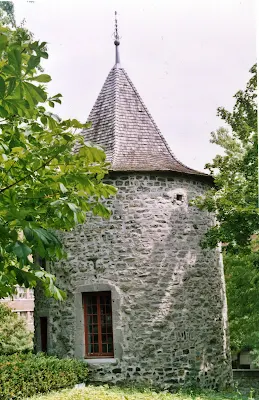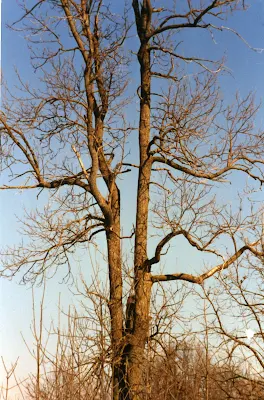
Monday, August 10, 2009
Saturday, August 8, 2009
Wednesday, August 5, 2009
Monday, August 3, 2009
Dear Sonja
 |
| Sonja Skarstedt |
 |
| Sonja Skarstedt |
 |
| 1986 |
Sonja Skarstedt, after a long battle with cancer, died on Friday, July 31, 2009. Sonja was a dear friend to many of us, with a terrific sense of humour and a great spirit to live and create. Geof Isherwood, her husband and life partner--they were always together--informs me there will be a memorial gathering on Sonja's birthday, next October 2. We have lost someone who contributed so much to poetry in Montreal, with her magazine Zymergy, published between 1987-1990, and later with Empyreal Press, she was a tireless and generous worker for many of us whom she published and many more that she supported in other ways. She was also a great support and friend of Louis Dudek in his final years and published his last books for him. What a loss we have all suffered, especially Geof and his family. Sonja was only 48 years old and had such a youthful spirit. I remember Geof and Sonja driving out to Huntingdon to visit back in 1989 or 1990, a time when I especially appreciated their visit, and the years during the 1990s when we worked on books she published for us. Two years ago I published her chapbook, Abundances, online with Coracle Press. She was a terrifically creative person, a poet, a visual artist, a playwright, and most recently she had branched out to making films.
You can find out more about Sonja at www.skarwood.com.
Wednesday, July 29, 2009
Signs in New York City and Los Angeles
 In Richmond, BC (above), or was that Steveston? CZ and I out one day with Hilde and Denis...
In Richmond, BC (above), or was that Steveston? CZ and I out one day with Hilde and Denis...(my son's name is Jake, so restaurants with his name always interest me)
On Amsterdam one day in 2008, in New York City (below):

On Broadway (below), again in New York City, reminding me of Artie Gold:


Venice Beach, California, back in 1997 at Christmas. That's where I want to live, somewhere where it's July all year long... no winters. Isn't that what we all say as we get older?
Monday, July 27, 2009
Le Grand Seminaire (two)

A photograph (above) of Le Grand Seminaire from Sherbrooke Street West and then some photographs (below) taken on the grounds.
Beginning with towers (one is seen above), I think of the Tarot cards, and then the Twin Towers in New York City. There is Joyce's tower in Dublin but, also, Yeats's famous tower; there is Robinson Jeffers' tower and C.G. Jung's tower. There is the poet's tower which is an archetype that exists inside the psyche of every poet.
There is also a long pool of water on the grounds of the Grand Seminaire, overgrown and intimate, with its invitation to dream, to the unconscious, to other pools of water and to water itself, the unconscious mind, a timelessness and place existing beyond space, beyond the here and now but thoroughly involved in the here and now. Water to enter and find, at the ocean's bottom, strange fish from the water's cold depths and perhaps sunken ships and lost treasure.
Doors are entrances, but they are also exits, and they are firmly closed (possibly not opened for many years and next to impossible to open), or left open and busy, part of the mercantile class, or ominous and forbidding, but always archetypal and evoking the unconscious.
Always the invitation to the unconscious is there, that place of poetry and creativity, presented in archetypes, in that which is timeless and gives us hope against the soul deadening efforts of everyday life at the material level. What is life denial? It is existing in the here and now, with no God, no prayer, no meditation, no art, no poetry, no dreams, forsaken of the spiritual... and there are those people in our society with their efforts to eradicate the spiritual by condescension and ridicule and life denial. And then, the presence of archetypes, the unconscious, the mythic dimension. There are the life deniers among us, but no one can ever fully succeed in denying life because, always waiting, like water in a spring (so important to the Celts), are the archetypes, the spiritual, the divine presence, which is always there, always waiting to appear, as natural as fresh water bubbling up from a spring on the side of a road. And what is as natural as water from a spring? It is that the unconscious mind is seemingly hidden but always present, always showing itself in dreams and archetypal dream imagery or strange complex behaviour only explainable by psychology.
The unconscious is present, it is always "behind the scenes" so that life is not as we might rationally want, but as the unconscious decides in its own way, almost a separate entity with its own rules and, importantly, always moving towards psychic wholeness, psychic healing.
You ignore the unconscious at your own peril. The archetypes are portals into the unconscious, into poetry.
Revised: 31 March 2020; this is substantially the same commentary as when it was originally published; I have edited a few sentences, included paragraph breaks, and so on; some of this is no longer what I would write today.
In the name of making money and nothing else, what you see in these photographs no longer exists.
Saturday, July 25, 2009
At Le Grand Seminaire, corner Atwater and Sherbrooke (one)







Tuesday, July 21, 2009
Central Fire Station, Old Montreal
Sunday, July 19, 2009
Friday, July 17, 2009
At The Cedars on Trout River

The old Morrison property located on the Morrison sideroad -- the house burned down years ago -- and only this shed remains. There are a few places I would say are "sacred sites" and this is one of them, another is St. Patrick's Church in Montreal. A sacred site doesn't have to be associated with any organized religion (sometimes the opposite prevails), there is a quality of quiet, depth of thought, and spirituality that can be felt at these places. Dowsers can locate them, they exist on ley lines, so you can hold out your hands, palm down, and walk along a country road, and feel the living presence of the earth pulsating in your hands. The Morrison property is located at the junction of the Fourth Concession and the Morrison Sideroad, in Godmanchester, Quebec. I remember in the mid-1990s, often visiting the Morrison property, just to sit and think or be quiet for a few minutes. It was one day, perhaps in 1996, that I decided to sell The Cedars and relocate back to Montreal. I was walking past the Morrison property when I realized that where ever I am living, whatever I have done, that who I am as a human being is a part of my essence. I don't have to live in any particular place, where ever I am I carry with me where I have been and who I am. I am on a journey in life and this is it.
An old oak--important for us Celts--in the middle of a field, on the left side of the Morrison Sideroad as you approach the Morrison Bridge that crosses Trout River from Route 138. I can see Route 138 in the distance...
I made this path just by walking on it from our house to the river. Whenever I think of The Cedars, our old home, I think of Trout River. It was a long commute from the city, about an hour and twenty minutes each way for work, but you certainly felt a lot more in touch with nature when you were out there. And the scenery was beautiful; it wasn't stunning or magnificent, but it was beautiful. The Trout River runs across the U.S. border from the Adirondacks, oddly enough an unpolluted river entering Canada from the States, and then in the perhaps ten miles it's in Canada it becomes polluted. Then, just before you reach Huntingdon, the Trout River merges with the Chateauguay River.
You wouldn't want to drink the water from the Trout River, but you could swim in it, and it wasn't polluted where we lived except with some run-off from farmers' fields. The only "problem" with the river was that it was very shallow, but this was also a good thing, you could swim in places and enjoy the river, but you could also wade the river. If there was one thing I really loved about this area, where I lived for almost twenty years, it was the river. You couldn't really cross country ski there, the snow blew across farmers' fields and became impacted and icy. I skated a few times on the river, and that was fun. Mostly I'd sit in the summer on a rock in the middle of the river, it was quite narrow (maybe twenty or thirty feet wide where we lived) and read and write poems. Or walk down to the river, it was maybe a hundred feet behind the house, and stand by the river and enjoy being there.
Wednesday, July 15, 2009
The Cedars
Monday, July 13, 2009
Subscribe to:
Comments (Atom)
































